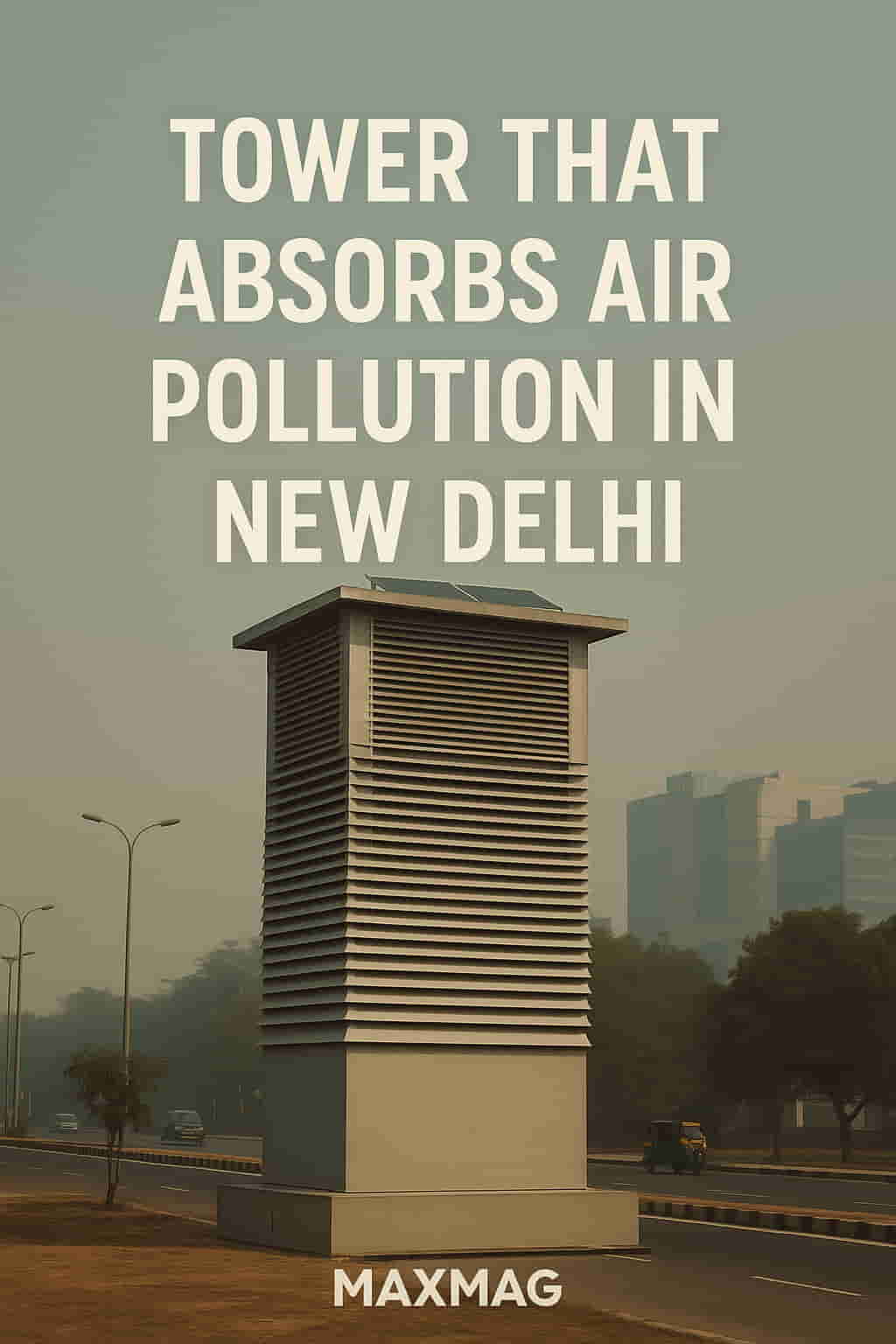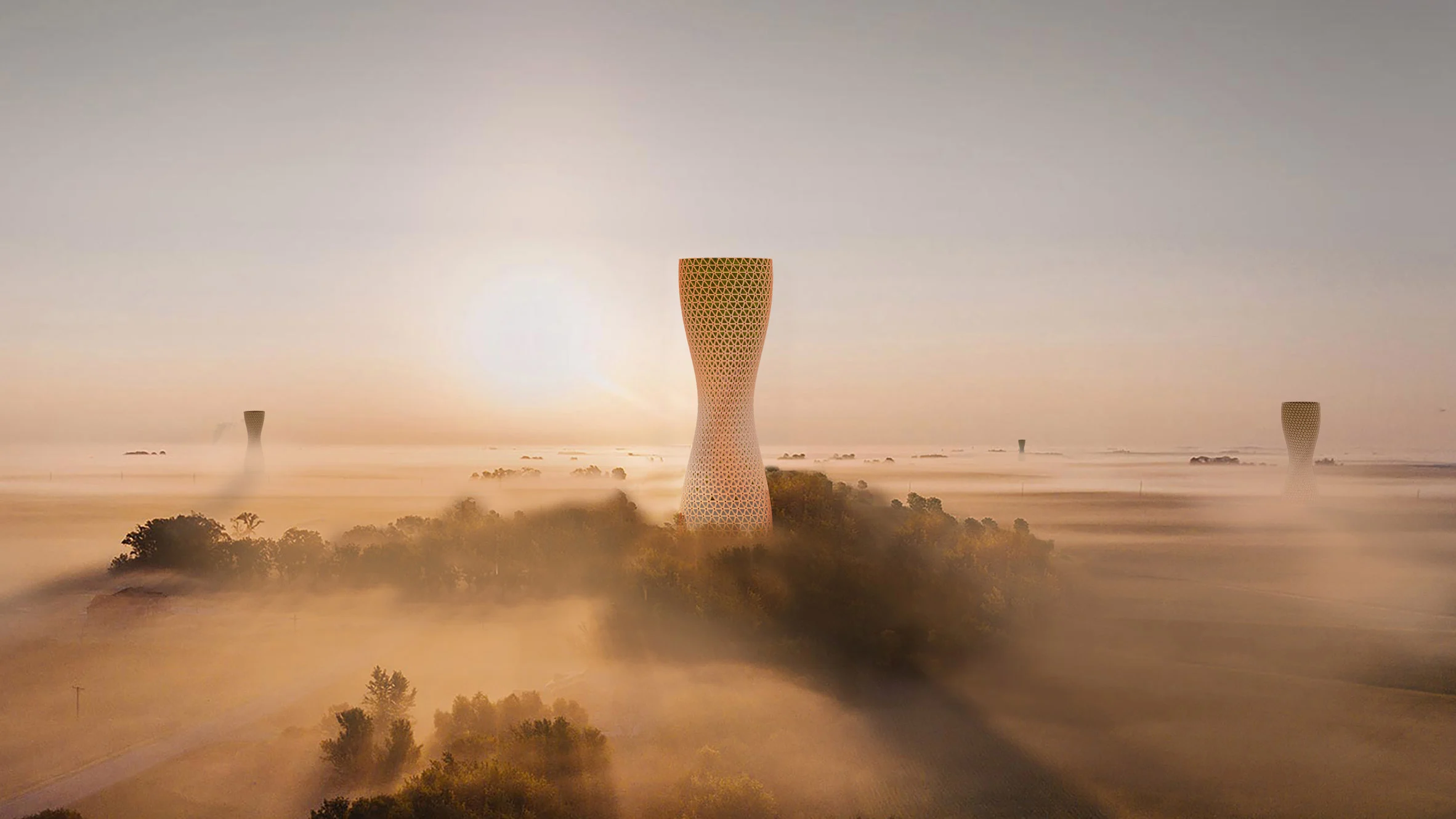
Air pollution in New Delhi has reached alarming levels, impacting millions of residents. Amid sky‑high pollutant concentrations, a new environmental breakthrough emerged: a tower designed specifically to absorb airborne toxins. This article examines how the technology works, why it matters, and what comes next for this innovative environmental solution.
A New Weapon in the Fight for Clean Air
In the heart of New Delhi, engineers have installed a massive structure designed to filter toxins, reduce smog, and improve the city’s air quality. As an innovative response to persistent hazardous smog, this tower could mark a turning point.
Historically, Delhi has relied on measures like restricted vehicle use and odd-even traffic rules. But this new system brings a fresh approach—an active installation that scrubs the air itself. The promise lies not in regulating future emissions, but in cleansing what already chokes the skyline. This concept aligns with proven interventions from the U.S. Environmental Protection Agency, which has long tracked the health benefits of localized emission reductions.
Design and Mechanism Behind the Tower
The structure stands approximately 12 meters tall and incorporates high-efficiency filters powered by fans. Outside air passes through multiple filtration stages—electrostatic, activated carbon, and HEPA-like filters—to remove harmful particulates like PM2.5, PM10, and even nitrogen oxides.
-
Electrostatic filters charge particles, trapping them magnetically.
-
Activated carbon filters absorb gaseous toxins such as benzene.
-
HEPA-inspired layers remove microscopic solid particles.
Fans move vast quantities of air—over 1,000 cubic meters per hour—into the core of the tower, where contaminants are trapped. Power is supplied via solar panels integrated into the design, minimizing operational emissions in line with National Renewable Energy Laboratory recommendations.
The tower also includes air quality sensors that provide real-time data to a cloud platform. These measurements enable remote diagnostics and alert systems if filter replacement or maintenance is needed.
Scientific Foundations and Comparisons
Filtration strategies used in the tower are not new, but their public, urban-scale application is. In hospitals and factories, electrostatic precipitation and HEPA filtering have proven invaluable for years. In fact, research from Stanford University has shown that air scrubbing at key traffic nodes can improve community health.
Unlike passive pollution controls that depend on citizen behavior, this tower is proactive—it reduces pollutants already present in the environment. The concept is comparable to technologies developed and tested by NASA, where air purification models are employed in controlled ecosystems aboard space stations.
The Delhi Pilot: First Results and Reception
Location and Setup
Initial installations were placed at schools, metro stations, and public parks—zones identified as pollution hotspots. Measurements have shown PM2.5 reductions of up to 25% within a 50-meter radius. These results have excited environmentalists and local officials alike.
The modular construction allows towers to be shipped preassembled. Once on-site, installation takes under 48 hours, and the units can operate completely off-grid using photovoltaic arrays.
Health Impact and Community Engagement
Local healthcare providers have begun to see real effects. Dr. Mehra of Indraprastha Hospital noted a significant drop in emergency asthma cases near one installation. The American Lung Association has documented the risks of PM2.5 exposure—especially to children and older adults—highlighting the importance of such innovations.
Community tech volunteers also play a role, updating local air quality via mobile apps that pull real-time data from the towers. These efforts have raised public trust and promoted environmental literacy.
Cost, Maintenance, and Funding
Each tower costs about USD 30,000 to install, including solar infrastructure and the first year of operation. Ongoing costs—mostly filter replacement and technical monitoring—are roughly USD 5,000 annually.
Although the upfront expense is considerable, a 2022 analysis by the World Resources Institute suggests that health care savings and improved workplace productivity from cleaner air may offset these costs in as little as 5 years.
Public-private partnerships are a major enabler. In Delhi’s case, city funds were matched by business contributions and environmental NGOs. Some of the funding also came from the Global Environment Facility, which supports urban sustainability projects in the developing world.
Expansion Beyond India
Global Applicability
The model is gaining interest in other urban centers. City planners from Karachi, Cairo, and even Los Angeles have requested pilot data. In Dubai, a prototype is being studied for use near construction zones and airports.
India’s Minister of Environment remarked,
“If the current performance holds, we’ll deploy these towers across 50 major cities by 2030.”
Economic Opportunity and Tech Transfer
Local manufacturers in Hyderabad have begun producing components, creating jobs and reducing reliance on imports. The design is open-source for public entities but offers licensing pathways for commercial deployment. This strategy mirrors the U.S. Department of Energy’s clean tech commercialization policies, encouraging both access and innovation.
The Broader Picture: Limitations and Ethics
No environmental solution is perfect. The tower improves air quality in localized zones but does not tackle systemic causes like industrial emissions, vehicular traffic, and crop burning. As Harvard T.H. Chan School of Public Health research indicates, air purification must be one part of a layered, multilateral response.
Critics also highlight the environmental cost of producing the tower itself—steel, electronics, and transport all leave a footprint. However, developers are exploring biodegradable filters and recyclable materials in future models.
FAQ
Q1: What is the purpose of the tower in New Delhi?
It is designed to reduce airborne pollutants like PM2.5 and PM10 in crowded urban zones using layered filters and fans.
Q2: How does it function?
Air is pulled into the tower, passes through filters, and exits cleaner. The tower runs on solar power and includes smart sensors.
Q3: Is the tower effective at reducing pollution?
Yes—pilot tests show a measurable drop in fine particulate levels within a 30–50 meter range.
Q4: Can other cities adopt the technology?
Absolutely. It’s modular, scalable, and suitable for any urban environment suffering from heavy smog or emissions.
Q5: What’s the cost of each tower?
Installation is about USD 30,000, with around USD 5,000 in yearly maintenance costs.
Q6: Does it run on renewable energy?
Yes, most units are powered by integrated solar panels, making them sustainable and low-emission in operation.
Conclusion
In a world where clean air is becoming a luxury, Delhi’s tower project represents a rare union of engineering, policy, and public health. While it doesn’t solve every pollution problem, it sends a powerful message: technology can clean up after us—if we let it.
The future of urban living may very well include such silent sentinels—structures that not only rise above the smog but help clear it too.








